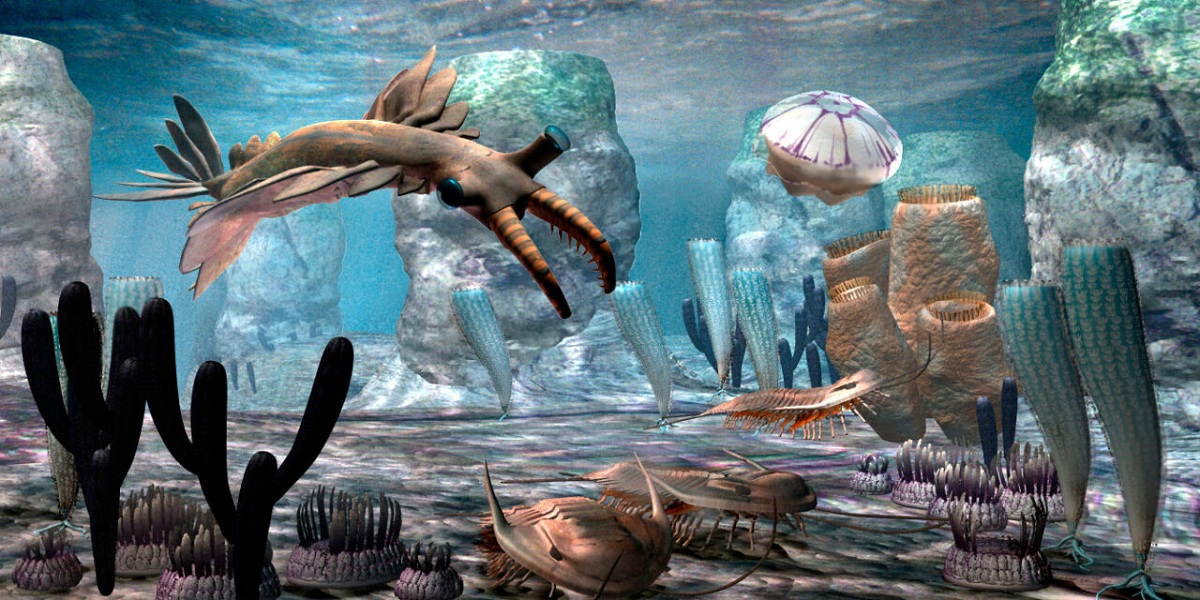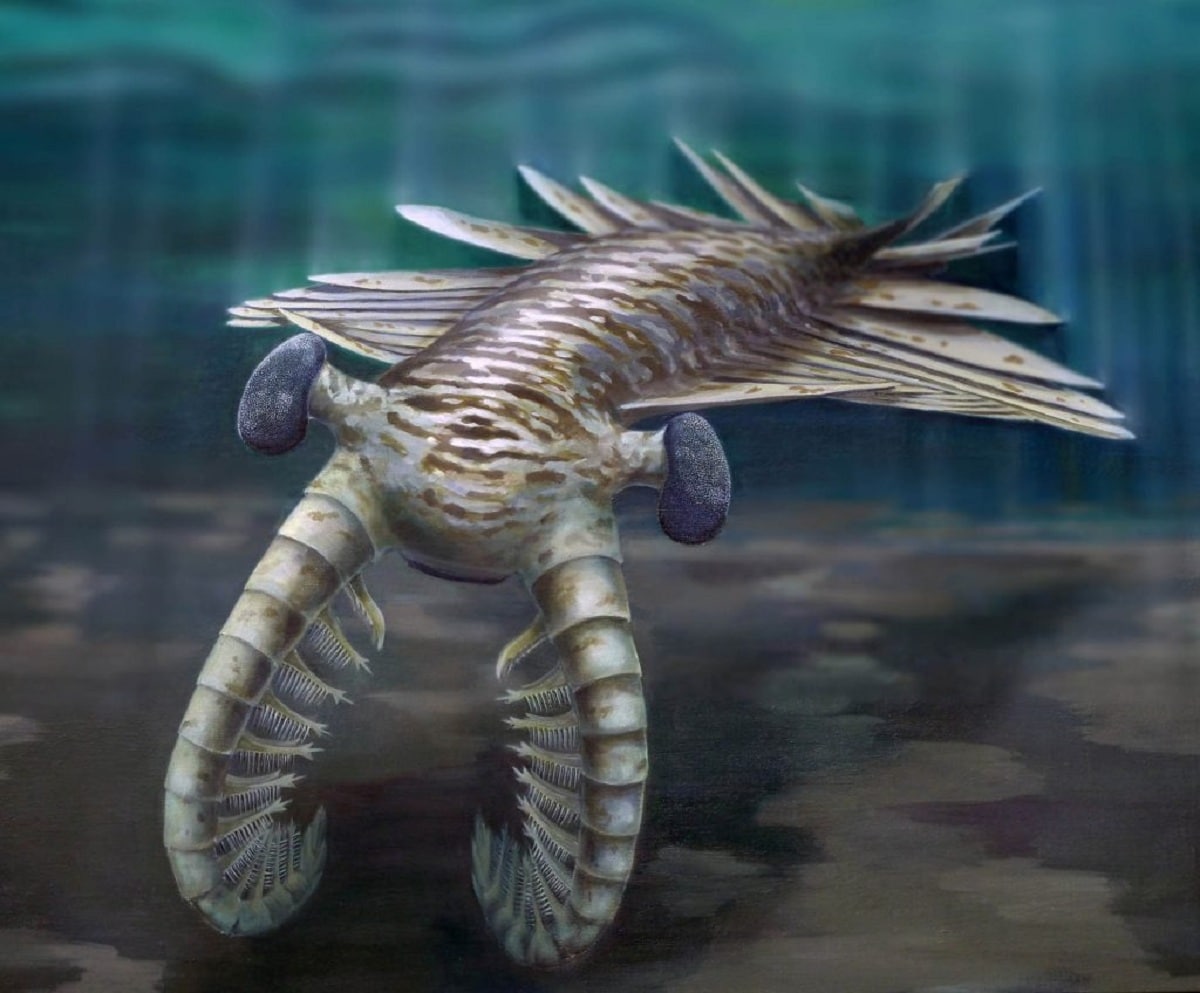
Within the Paleozoic era we have several periods in which the geological time. The first division belongs to Cambrian. It is a division of the geological timescale and the first of the six periods of the Paleozoic era. It began approximately 541 million years ago and ended approximately 485 million years ago. The next period is the Ordovician.
In this article we are going to focus on all the features, geology, climate, flora and fauna of the Cambrian period.
Key features

This period of the Paleozoic idea predominates for having a great impact on a geological level throughout the planet. The Cambrian has been considered to span only 70 million years, but science was able to correct it thanks to information from the fossil record. The branch of geology that focuses on these transformations experienced by the planet earth since its formation is the historical geology.
This entire period receives the name of the Cambrian from the name that comes from Cambria. This name is the Latinized form of Cymru which means Wales. Wales is today where the first geological remains belonging to this period were identified. Along this geological division there is a great explosion of life for the first time recorded in fossils. The first multicellular organisms can be distinguished which are more complex than sponges or jellyfish.
Among the most important creatures of this period are the green algae that are barely a few millimeters in diameter because of the trilobites. These trilobites are a famous group of arthropods that were able to survive two mass extinctions. This emergence of life is called the Cambrian explosion and was one of the great events that marked the boundary between the Neoproterozoic and the Cambrian period.
Cambrian period geology

During this period it is thought that the continents were the result of the fragmentation of a great supercontinent that already existed the Neoproterozoic and that was called Pannotia. The largest fragment of the supercontinent is Gondwana and is located to the south along with 3 small continents called Laurentia, Siberia and Baltic. These continents were moving north due to the movement of the Tectonic plates that are propelled through convection currents of the Earth's mantle.
This is how the drift of the continents began to form the positions we know today. Continental drift rates in the Cambrian period are estimated to have been abnormally high compared to previous periods. This means that there was a high activity of the tectonic plates. Thanks to these movements of continents, it was possible to increase biodiversity on a planetary level since various ecosystems with different characteristics were created.
The Panthalassa ocean is the one that covered most of the entire planet, while other minor oceans like the proto-Tethys and the Khanty ocean were found between the waters of the smaller continents called Laurentia and Baltic.
Cambrian climate

The climate of the Cambrian period is believed to have been significantly warmer than in earlier times. During this period there was no ice age at the poles. That is, no land pole was covered with ice. In turn, the Cambrian period is divided into three eras: Lower Cambrian, Middle Cambrian and Upper Cambrian. We are going to analyze the climate and geology briefly in each epoch of this period.
- Lower Cambrian: During this time the Gondwana continent and other smaller land masses occupied all the equatorial zones. This has been known thanks to the records of the limestone deposits in the abundant seas and tropical epicontinental. At that time, the Cadomian orogeny is what led to periods of emergence of large land masses at the beginning of the Cambrian.
- Middle Cambrian: during this time there was a transgressive cycle that was interrupted by two regressive pulses.
- Upper Cambrian: Much of the Gondwana continent that occupied more equatorial positions, was moving towards colder latitudes. They were being replaced in positions since the smaller continental masses such as Laurentia, Siberia and Australia were occupying equatorial positions.
Life blast

As we mentioned before, this period has been known to be a division of time where there was a more intense burst of life than has ever been known. It is known as the Cambrian explosion. This explosion gave rise to the appearance of incredible biodiversity on the planet that included many of the groups of animals that we know today.
Among these animals that arose, we find the chordates of which the vertebrate genus belongs and which includes humans. It is not known for sure how such a spark of biological explosion was possible. It is believed that it may have been the oxygen that was present in the atmosphere at the time and that, thanks to emissions from cyanobacteria and algae that carried out photosynthesis, it could reach the levels necessary for all organisms to grow their more complex structures giving different forms of life.
Another aspect to consider is the environment that made it more hospitable as the weather warmed up and the sea level rose. In this way, shallow marine habitats were created that were ideal for generating new forms of life since there are large amounts of nutrients.
However, it is thought that many scientists they have exaggerated the magnitude of the Cambrian explosion due to the proliferation of animals with hard structures that fossilized more quickly and easily than their predecessors. As of all this you can only have fossil records depends on the structure of the body. If the body is soft it cannot be fossilized in the same way. For example, much is known about brachiopods that lived in clam- and cockle-like shells and other animals that feature jointed external skeletons known today as arthropods.
I hope that with this information you can learn more about the Cambrian period.